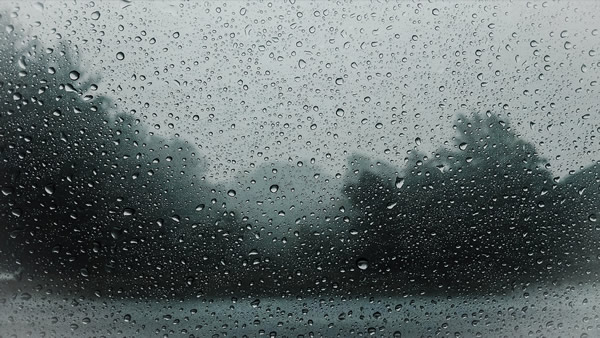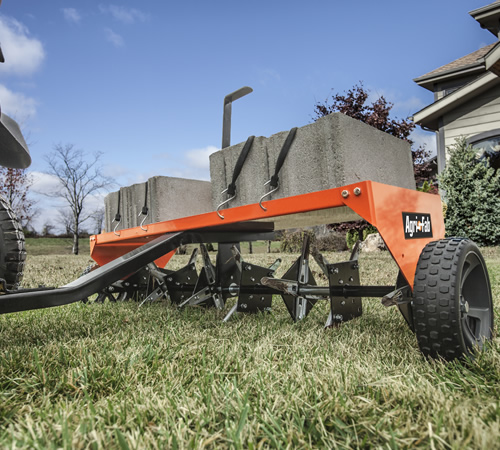
Rain, rain go away…
Last Summer our lawns were dry and crispy, this year edging towards bog like. Lawns will still thrive in wet and warm weather, but dense or clay soils tend to waterlog with too much rainfall. When soil is compacted the water sits on the surface and takes longer to drain away, and with relentless rain lawn become waterlogged. When the grass has been underwater for while it will become starved of oxygen and start to turn yellow.
Thank you for reading this post, don't forget to subscribe!
Firstly, don’t try to cut your grass if you have a waterlogged lawn. You will need to remove the water before trying to cut it. We recommend not mowing until the lawn has dried out completely. Never use an electric lawnmower on a wet lawn. It is important to remove any pooled water and wet under foot areas before even attempting to mow. Wet grass clogs up mower chutes and sticks in grass bags. There are some mowers that are designed for the wet, British weather, these machines have wide discharge chutes and extra traction see Weibang.
We always recommend aerating your lawn in the Autumn and Springtime (see our blog on aerators), but if you haven’t had time and your lawn is looking like a water feature there are a few thing you can do to help the water drain away. A lawn doesn’t need to be covered in water to be damaged, if its squelchy under foot, even walking on the lawn will starve the grass of oxygen. Stay off the grass as much as you can if conditions are soft under foot.
The good thing is the ground should be softer with all the rainfall, so aerating should be easier than normal for June.
Pooling – using a soft bristle brush, gently brush away the excess water. It is important not to drag the brush across the ground as this will damage the grass. Once you have removed as much water as possible use a garden fork to aerate. You may need to use boards to do this but remember to remove them as soon as possible so you do not compact the ground and starve the grass of oxygen. Fork the lawn approximately 15cm (6”) – 20cm (8”) apart, the deeper the hole the better, this will help the water drain deep into the soil and minimise the pooling.
If you have a paddock or large lawn that you use a ride on or lawn tractor to mow, you can buy towable attachments (see mowers-online selection here). Be sensible, if the grass looks like a pond you may have to pay for a drainage company to come and take a look or wait until the rain stops, but if it looks like you will be able to drive on it eg no water pooling or sinking underfoot, make a quick pass with a suitable towable aerator and leave at least 24-48 hours before driving on it and aerating again.
Aerating – once lawn has drained enough for you to walk on it aerate before the next wet spell. If possible, use a hollow tine aerator (see Handy Hollow Tine Aerator), this will remove plugs of soil and considerably improve drainage. After a lot of rain aerate 6cm (2.5”) apart and the same in depth. After aerating gentling brush the removed soil back across the holes, sand or compost could also be added at this point.
Overseeding – putting plenty of grass seed down will encourage a thicker lawn. It will also reduce the dreaded moss that loves to grow in patches areas.
If waterlogging persists, and annual aerating in Spring and Autumn doesn’t alleviate the problem, it’s probably worth looking at a long-term solution.
- If you have the space a gravel path as close to the waterlogged area will help with drainage. Any permeable substrate will work for this, there are plenty of types to choose from.
- If you and you garden can afford it and you don’t mind the mess, a soak away, drain or ditch can be installed. This would be a good solution for paddocks and orchards with a returning water problem. Considering the best place for these options is very important, sometimes the lowest point isn’t suitable as its too close to the house, garage or neighbour’s boundary.
- Embrace the space – a pond or bog garden can be a lovely feature and if you are a keen gardener, planning it and creating it can be a project to get stuck into.
- Aeration in the Spring and Summer months is a must for clay and dense soils and will help to avoid waterlogging in the rainy season(s).

We recommend
AL-KO Comfort 38P Petrol Combi Care Lawnrake & Scarifier £299
Sherpa 2-in-1 Petrol Scarifier and Aerator £299
Weibang WB457AB Hollow Tine Petrol Aerator £1799
